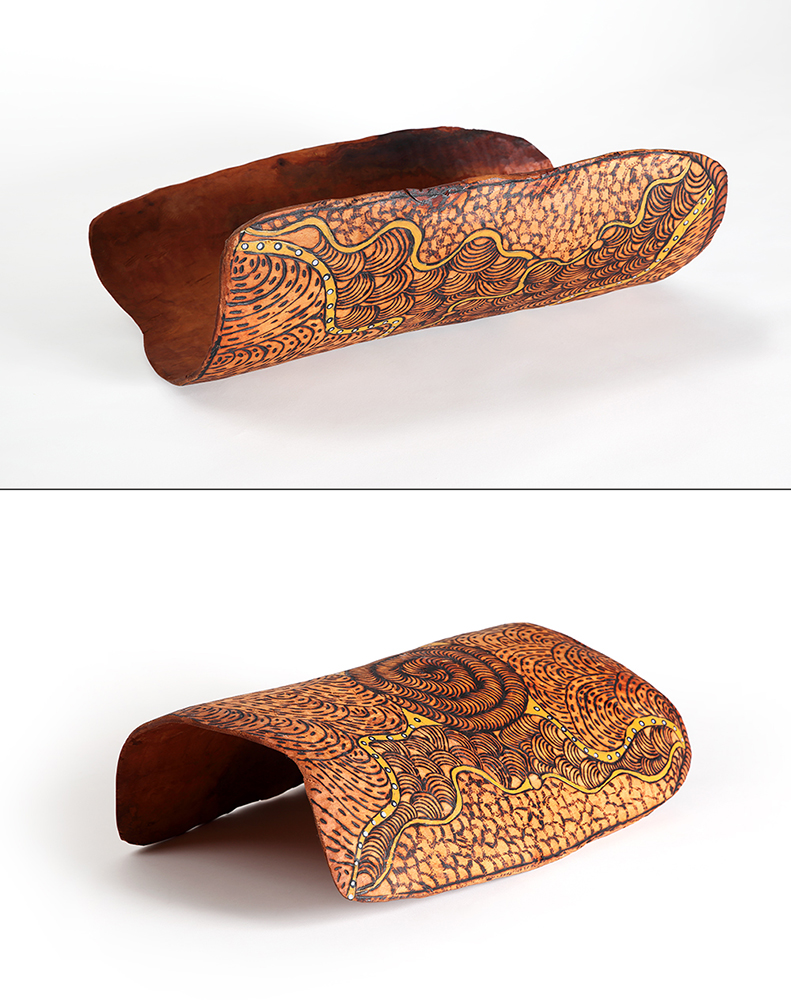Close
Piti (collecting bowl)
The piti or wooden bowl is a traditional woman’s carrying vessel for food and water. Contemporary artists use walka, patterns burnt into the wood with wire heated on a wood fire. These relate Tjukurpa, stories about the Tjukuritja (Creation Ancestors) and the activities which shaped the land, the people and their Law. Many of the details of Tjukurpa are restricted to senior custodians so it is not possible to describe the full story behind the walka.
Theresa Nyaningu hasn’t elaborated on the story of this walka, however it contains many elements of traditional desert design. Series of curving lines are often described as parts of the country: wind rippled sand dunes, intercut by the tracks of a Tjukuritja; the burrowings of animals; or the dry bed of a desert creek. Circles can be waterholes, campsites, eggs or headrings. In telling stories, women sit flicking sticks in the sand as they talk and they say walka is like this, the rhythmic strokes that accompany stories.
Theresa has added an unusual touch of paint to highlight some of the pathways in her design. Also unusual is the spiral pattern in the centre rather than the more typical concentric circles.
Theresa Nyaningu is minyma Anangu, a Pitjantjatjara woman who grew up on the Anangu Pitjantjatjara Yankunytjatjara Lands in northern South Australia. In recent years she has been based in the community of Kaltukatjara (Docker River) and has been workng with Maruku Arts since 2016.

